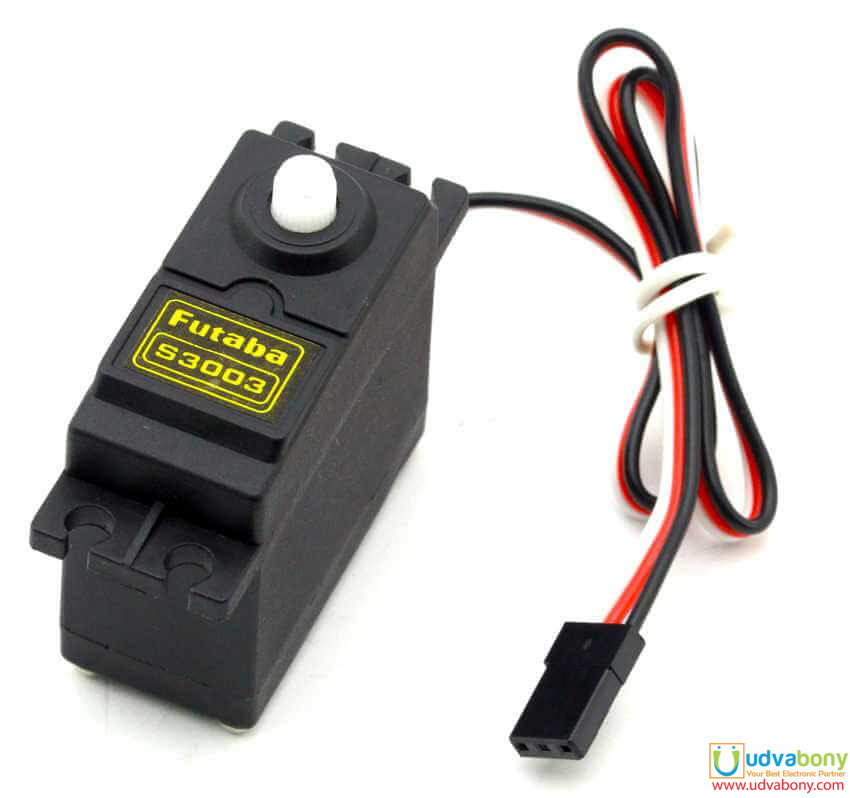
- #LARGE SERVO MOTOR ARDUINO MANUAL#
- #LARGE SERVO MOTOR ARDUINO SOFTWARE#
- #LARGE SERVO MOTOR ARDUINO CODE#
Nice and modular and I'm sure I would use it for all sorts of odd projects. Power leads in, power leads out, 3 prong plug for potentiometer, and 3 prong plug for signal. I would oversize the h bridge and put everything in a small weather proof box.
#LARGE SERVO MOTOR ARDUINO MANUAL#
Also a nano and potentiometer is cheaper than a (trustworthy) servo. Operating Voltage: DC 4.8-6V Offer 3 modes to check servos or ESC The Manual Mode allows you to turn the knob to different speeds and check the reaction time The Neutral mode makes the servo go back to the neutral point The Automatic ’’Window Wiper’’ Mode makes the servo swing like a window wiper in the largest angle possible Connect to up to 3 servos.
#LARGE SERVO MOTOR ARDUINO SOFTWARE#
So why do I want to use an arduino? Because I want to program in software endstops and range (rather than mechanically tune potentiometer range of motion) and I'd like some control of pid tuning if necessary. Others have done this in the past using just a hobby servo, cut off the servo motor, connect motor leads to h bridge, and go from there.
#LARGE SERVO MOTOR ARDUINO CODE#
Is there any kind of pre written code available for this kind of control? I'm thinking a 12 wiper motor, a heavy duty h bridge, an arduino nano, and a 5k or 10k potentiometer (for position feedback). Then, both shields must have begin called, before you use the motors connectedĪFMSbot.I want to build a big 12v servo that receives signal from a standard 5v rc hobby receiver (or arduino, or whatever, but using the rc protocol). You can request a stepper or DC motor from any port, just be sure to use the right AFMS controller object when you call getMotor or getStepper! On the bottom shield connect a stepper to port M3/M4 with 200 stepsĪdafruit_StepperMotor *myStepper1 = AFMSbot.getStepper(200, 2) Īdafruit_DCMotor *myMotor1 = AFMSbot.getMotor(1)

On the top shield, connect two steppers, each with 200 stepsĪdafruit_StepperMotor *myStepper2 = AFMStop.getStepper(200, 1) Īdafruit_StepperMotor *myStepper3 = AFMStop.getStepper(200, 2) Then we can request the motors connected to each one So here we are starting by defining the library for Servo motor.

The H-bridged in case is a Monster Moto shield. In this case I used an Arduino Uno, but any type will do actually. So, if the shaft needs to turn a large distance, the motor will run at. Circuit diagram to control Nema 17 stepper motor with Arduino is given in. When you create the shield object, specify the address you set for it above. Arduino has library for Servo Motors and it handles all the PWM related things to rotate the servo, you just need to enter the angle to which you want to rotate and there is function servo1.write (angle) which will rotate the servo to desired angle. The electronics part of our giant servo is composed of an Arduino, an H-bridge and the potentiometer we just glued onto the motor shaft. Arduino - Servo Motor, A Servo Motor is a small device that has an output shaft. Since all the SMT components on this board are large 2 pad parts you can do. One motor shield is going to be called AFMSbot (bottom shield, so we remember) and one is AFMStop (top shield) so we can keep them apart. First we must create a Motor Shield Controller for each shield, with the assigned address.Īdafruit_MotorShield AFMSbot(0圆1) // Rightmost jumper closedĪdafruit_MotorShield AFMStop(0圆0) // Default address, no jumpers The Adafruit_MotorShield library has the ability to control multiple shields, unlike the older AF_Motor library. Usually servo motors come with arms that are connected to the object required to move. Usually mini and standard size servo motors can be powered by Arduino directly with no need to external power supply or driver.

You can adjust the address of the shields to range from 0圆0 to 0x7F for a total of 32 unique addresses. Servo motors may be classified according to size or torque into mini, standard and giant servos. The only thing to watch for when stacking shields is every shield must have a unique I2C address. The top shield does not have to have stacking headers unless you eventually want to put something on top of it.

Each shield you want to stack on top of must have stacking headers installed. If you need to control a lot of servos, you can use our 16-channel servo shield and stack it with this shield to add a crazy large # of servos. Note that stacking shields does not increase the servo connections - those are hard-wired to the Arduino digital 9 & 10 pins. (PS if you drive 64 steppers from one of these shields send us a photo, OK?) You can stack up to 32 shields for a total of 64 steppers or 128 DC motors! Most people will probably just stack two or maybe three but hey, you never know. Every shield you stack can control another 2 steppers or 4 DC motors (or a mix of the two) One of the cool things about this shield design is that it is possible to stack shields.


 0 kommentar(er)
0 kommentar(er)
